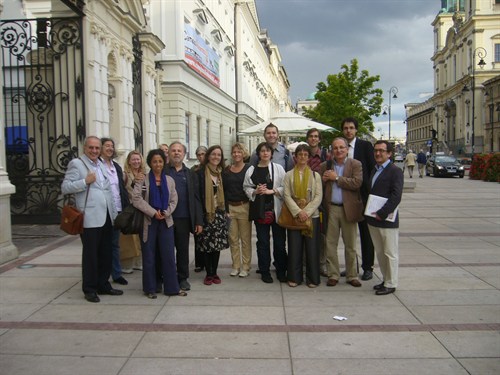European Network for Baroque Cutural Heritage
ENBaCH is a research project promoted and economically supported by the European Commission through the Education, Audiovisual and Culture Executive Agency (EACEA). It involves a network of eight Universities located in six different European countries: Universitat de Barcelona, Technische Universität Dresden, Universität Greifswald, Ecole des Hautes Etudes en Sciences Sociales – Paris, La Sapienza Università di Roma, Università di Teramo, Uniwersytet Warszawski, Universität Wien, wishing to resort to digital tools and technologies to pool and share their respective historical heritage of “Baroque”, common and contrasted at the same time.
Thus, ENBaCH aims at elaborating a multiple-approach pattern for promoting knowledge concerning the European baroque cultural heritage and creating innovative strategies for disseminating historical consciousness not only among scholars and academics, but also among school teachers, primary and secondary schools students, life-long education programs, policy makers, civil servants and a wider public.

ENBaCH Subproject Greifswald/Kiel
The University of Greifswald and its associated partner, the Christian-Albrechts-University of Kiel, are concerned with the documentation and socio-historical interpretation of the baroque cultural heritage in the Southern Baltic Sea region and the dissemination of the results to a broad audience. Since the start of the project, the major focus lay on the cataloguing of baroque sacral and secular architecture in contemporary Southern Denmark, Northern Germany, Northern Poland, Kaliningrad and the Baltic states via extensive archive and literature research as well as field studies. So far, tourist circuits for selected cities and areas in Northern Germany have been designed. Also, a database that systematically brings together the collected information has been compiled. This database forms the basis for the development of an "Atlas of the Baroque Cultural Heritage" which will combine innovative ways of mapping baroque architecture with in-depth historical analysis of cultural and artistic exchange processes.

